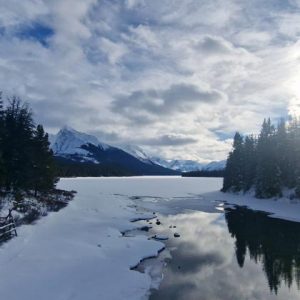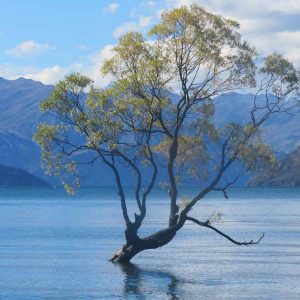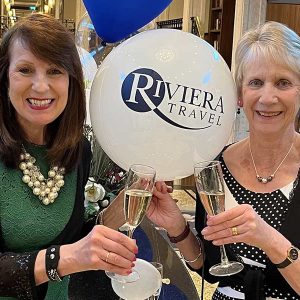By Hook or by Crook
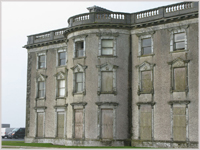 We stayed at the excellent Brandon House hotel in New Ross which was a great improvement on the theoretically superior Europa hotel in Belfast, which had a feeble to non-existent public WiFi network, no fresh cooked breakfast options & it was hard going to get a smile from the staff.
We stayed at the excellent Brandon House hotel in New Ross which was a great improvement on the theoretically superior Europa hotel in Belfast, which had a feeble to non-existent public WiFi network, no fresh cooked breakfast options & it was hard going to get a smile from the staff.
From New Ross it was a short journey to Dunganstown & the Kennedy Homestead. It’s only a simple farm with the old family house & a large stable with memoribilia & details of the Kennedy family history.
Few Americans would pass up the opportunity to visit the Kennedy homestead in Dunganstown and the Grannies were thrilled at the prospect. It’s a simple place with a homespun exhibition that Kennedy heir Patrick Grennan says, “all came from suitcases and old biscuit tins.” A brand-new visitors centre is currently being built & will open in 2013. It will be more practical, more visitor friendly but I couldn’t help thinking that some of the charm and simplicity – that reflects the old family, might be lost amongst the modern visitors facilities.
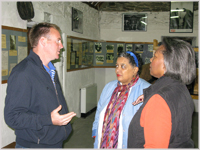 Patrick Grennan, one of the most charming men you might ever meet, is the heir to the Kennedy homestead, the farm that PJ Kennedy left to sail to America in 1848. PJ was a cooper & had a job to go to in Boston, so was more fortunate than many other immigrants.
Patrick Grennan, one of the most charming men you might ever meet, is the heir to the Kennedy homestead, the farm that PJ Kennedy left to sail to America in 1848. PJ was a cooper & had a job to go to in Boston, so was more fortunate than many other immigrants.
JFK returned to the Dunganstown family homestead in 1947, then again in 1963 when he made a famous speech on the quay at New Ross which is just along from the Dunbrody ship. He promised to return for a more private family reunion, but five months later he was dead.
There’s a statue of him on the quay & as part of next year’s tourism inititive – ‘The Gathering 2013’ it is proposed to bring the eternal flame from Arlington cemetry to the quay at New Ross.
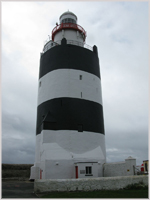 The nearby Hook peninsula has a wild & rugged beauty & at its tip is the ancient Hook lighthouse. As a thirteenth century Norman structure, the Hook lighthouse is the oldest operational lighthouse in the world. Built 800 years ago by William Marshall, its four-metre thick walls have ensured it is an amazingly well-preserved Norman building.
The nearby Hook peninsula has a wild & rugged beauty & at its tip is the ancient Hook lighthouse. As a thirteenth century Norman structure, the Hook lighthouse is the oldest operational lighthouse in the world. Built 800 years ago by William Marshall, its four-metre thick walls have ensured it is an amazingly well-preserved Norman building.
The Hook lighthouse is an important shipping guide into Waterford harbour & the town on the other side of the entrance is called Crook – this is the origin of – ‘by Hook or by Crook.’ This phrase is attributed to Oliver Cromwell before his murderous rampage across Ireland when he said, “I’ll take Ireland by Hook or by Crook.”
On the way back for another night in New Ross the Grannies were keen to stop off at Loftus Hall, a grand Victorian mansion overlooking Waterford harbour. They were intrigued by a tale of the devil’s visit, which was so widely believed that when the house was left empty for decades, no thieves or vandals every went near it.
Glendalough
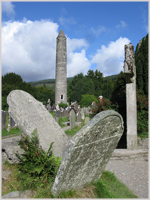 A two-hour drive north from New Ross brought us to Glendalough, one of Ireland’s most visited destinations. It’s only an hour south of Dublin, but it could be centuries away from the metropolis – except during high summer when it’s as busy as Grafton Street in Dublin.
A two-hour drive north from New Ross brought us to Glendalough, one of Ireland’s most visited destinations. It’s only an hour south of Dublin, but it could be centuries away from the metropolis – except during high summer when it’s as busy as Grafton Street in Dublin.
Glendalough is a glacial valley with steep granite cliffs on one side, and it’s a beautiful walk to the upper lake. At the valley head there are the ruins of an abandoned miners village where lead was mined from 1850 until about 1957.
Historian and archeologist George McClafferty, from the visitors centre, explained the history & myths of Glendalough – a beautiful wooded valley in the Wicklow Mountains with the ruins of a sixth century monastic city.
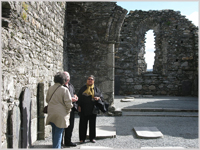 It was built by the followers of the St Kevin and destroyed during the British Reformation. Today the ruins are still impressive and include houses, churches, a graveyard and the 110-foot round tower which is 1,000 years old and one of the best in Ireland.
It was built by the followers of the St Kevin and destroyed during the British Reformation. Today the ruins are still impressive and include houses, churches, a graveyard and the 110-foot round tower which is 1,000 years old and one of the best in Ireland.
The Round tower was originally a bell tower with a doorway ten feet above the ground to deter attacks, especially from Viking raiders that plagued the area.
Get there before 10am and you can have the place to yourself.
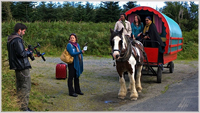 Regina couldn’t wait to get behind the reins of the traditional travellers horse-drawn caravan that Neasa Clissmann brought to our film shoot at Glendalough; “it’s only tourist that are keeping this tradition alive,” Neasa said.
Regina couldn’t wait to get behind the reins of the traditional travellers horse-drawn caravan that Neasa Clissmann brought to our film shoot at Glendalough; “it’s only tourist that are keeping this tradition alive,” Neasa said.
Some of us thought it might seem a bit cheesy, but it’s a green way to travel, and the slow pace is a great way to appreciate the landscape and everyone you meet smiles and wants to chat.
Photographs by Peter Lynch
Read Part 1 – the Grannies in Ireland
Read Part 2 – the Grannies in Ireland


